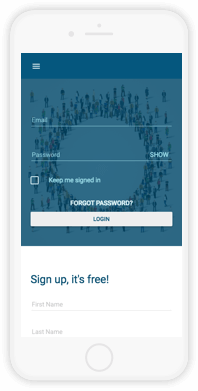What we do
Services
Experts in


Knocking is a telemarketing tool that assigns a unique phone number to each lead or group of leads. This service uses call-forwarding and phone extensions to track every phone call. This provides information about people who contact you via phone. For example, where they got the number, call length, call results, etc. Gathering this information improves our understanding of the interests and needs of the target audience and highlights the most efficient sources of information in order to adjust marketing campaigns to receive higher ROI.
Our client’s product idea was definitely worth implementing, since it would open new opportunities to telemarketing companies. The product owner started by creating a strong team with relevant expertise to develop the product. When Clockwise Software entered the game, the team already included:
The decision was to develop the server side in a modern backend language, Scala. The backend team consisted of freelance developers.
The product owner had an application design concept in mind. He hired a freelance designer to create the user interface.
Knocking’s founder was looking for remote professionals to join the existing backend and design teams. After working with frontend developers from Clockwise Software, the founder decided to extend the team. As a result, we also provided quality assurance and project management services.
When working on the client-side of the application, we focused on responsiveness and smooth UX. We created an easy tracking sets management page and Help Center as well as improved the Plans page. The customized Dashboard tab intuitively displays analytics received from the server.
We implemented manual and automated testing to extensively audit the user interface and application functionality.
The central task of the PM was to manage the work of two teams separated by several time zones. Fortunately, our previous experience with similar cooperations helped us organize a perfect workflow.
Initially, it was important to sync the work of the frontend and backend teams, which were located in different time zones. This challenge was solved by adding a PM with relevant experience to the remote team’s management. We also scheduled regular calls and deploys during times when all team members were at work. As a result, the cooperation ran smoothly and resulted in a highly-competitive product.
Remote cooperation caused issues with syncing the work of the frontend and backend teams. Occasionally, our developers needed the APIs for graphs testing, but the backend team wasn’t able to provide them on time. As a result, we decided to use mock data and added the real server data once it was provided by our colleagues.
Following the MVP approach, we focused on developing an application with minimal functionality in the shortest time possible. We decided to implement the ready design template Fuse, which already included the main elements, transitions and animations. The use of this responsive template enabled us to significantly reduce the time required for frontend development.
Just as any other template, Fuse fails to cover some specific use cases. For example, we had to adjust the Fuse dashboard to display analytics received from the backend. As a result, information according to 19 key metrics became available to the user in the Analytics tab.
Although we made the application as intuitive as possible, we understood that the users would still have questions. It was important to give them answers in the fastest and easiest way possible. First, we developed a FAQ page, where the most popular questions were grouped in topics. However, it was impossible to foresee all possible questions, so we added a contact form for specific queries.
Describe your product idea and we will start working on it within 24 hours.
Contact us